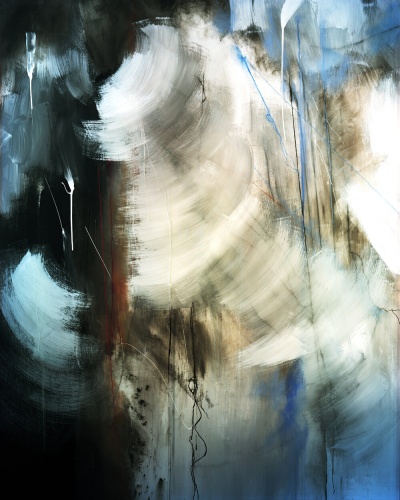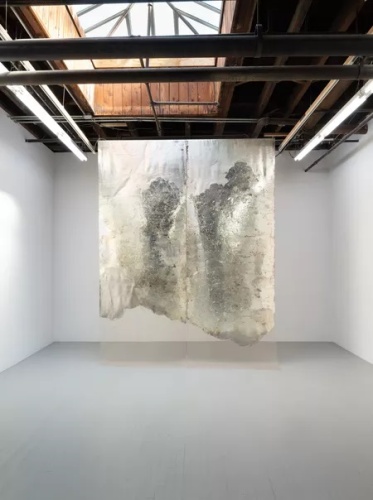Cranbrook Art Museum’s Grand Reopening Exhibition
Cranbrook Art Museum’s Grand Reopening Exhibition
No Object is an Island: New Dialogues with the Cranbrook Collection Opens November 11, 2011
First Exhibition in the Newly Renovated and Expanded Museum Explores Cranbrook’s Continued Influence in the World of Contemporary Art and Design
Bloomfield Hills, Michigan – No Object is an Island: New Dialogues with the Cranbrook Collection is the provocative exhibition that will reopen the expanded and renovated Cranbrook Art Museum at Cranbrook Academy of Art on November 11, 2011. Inside and around the landmark building, designed by renowned Finnish architect Eliel Saarinen, the exhibition will pair the work of 50 leading contemporary artists and designers with an equal number of objects from Cranbrook’s outstanding permanent collection of 20th- and 21st-century art and design. Visitors will discover a Nick Cave Soundsuit side-by-side with a tapestry by Arts and Crafts master May Morris. A conceptual partnership that Maarten Baas projects between himself and Marc Newson meets a very real early collaboration of Eero Saarinen and Charles Eames. And Whitney Biennalist Tony Mattelli’s hyperrealist sculpture, The Hunter, faces off with one of fellow sculptor Kate Clark’s ravishing taxidermy beasts with a human face.
The pairings reinstate the challenging dialogue that has characterized Cranbrook since the revolutionary graduate school and museum opened more than 80 years ago. In so doing, No Object is an Island is an analog for Cranbrook Art Museum itself, the renovation of which transcends common notions of museum practice. At Cranbrook, the era of museum collections hidden in remote and dusty storage lockers is over. After the museum’s two-year, $22 million upgrade, the entire collection will now be visible—and accessible—to students, scholars, and visitors. Classes will occur in view of, or actually inside, the museum’s glass-walled vaults, where the art will reside in cabinetry custom-designed to display it exhibition-style at all times. Objects in the galleries will be keyed to additional collections materials readily available for study in a research center within the new 20,000 square-foot Collections Wing. The buildings and their holdings will become one integrated teaching and learning machine, an educational resource like no other.
For Director Gregory Wittkopp, who has guided the museum as its curator or director for 26 years, No Object is an Island is an opportunity to showcase a cross-section of the museum’s permanent collection—including numerous recent “never-before-seen” acquisitions—while also demonstrating its continued relevancy to contemporary practitioners. “At a moment when most museums would simply trot out their 100 greatest hits, Cranbrook will use its collection to challenge and inspire a new generation of artists and designers and other museum visitors,” says Wittkopp. “While the 20th-century museum saw its mission as preservation, we are leading the charge of 21st-century museums to educate through objects.”
Often called the American Bauhaus, Cranbrook Academy of Art has long been hailed for its prescient embrace of interdisciplinary art and design education. No Object is an Island and the enhanced museum will embody and update that tradition. Nowhere is this more evident than in the exhibition’s unexpected pairings, such as that of Cranbrook’s legendary designer, Harry Bertoia and contemporary metalsmith Dorothea Pruhl. Here we find Bertoia working not at the expected scale of his iconic furniture or Sound Sculptures but as a jeweler, next to one of Europe’s most influential craftswomen. Or the dialogue between Asymptote Architecture and Eero Saarinen, both of whom have helped redefine the form of architecture and how we model it. In the case of Asymptote, visitors will see a “fly-through” projection of their award winning, 2011 YAS Hotel in Dubai next to a rare original model of Saarinen’s structurally daring Dulles International Airport. Separated by half a century of thought and technology, both buildings nevertheless share a tradition of radical form-making (and advanced technology) that are characteristic of Cranbrook’s leading role in contemporary architecture.
No Object is an Island is organized around six themes—Craft, Site, Comfort, Resistance, Process, and Fiction– each of which connotes a period of innovation at Cranbrook Academy of Art and presents a body of work that suggests common points of departure in the pursuit of creative expression and original art. While “Craft,” for example, reflects the important role that Cranbrook’s founder George Booth played in shaping the American Arts and Crafts movement (giving it physical form through the architecture and collections of Cranbrook), “Process” explores the work of contemporary artists who give physical form to the activity of making. “Comfort” suggests both the Academy’s role as the cradle of mid-century modernism, as well as the work of contemporary designers who are continuing to challenge and redefine the nature of domestic and work environments. The themes of “No Object” are by no means exhaustive; nor are they meant to be prescriptive. Instead, they offer a starting point for exploring the remarkable influence Cranbrook has had on contemporary creative culture.
No Object is an Island will open on 11-11-11 in conjunction with an eleven-day program of events, lectures, films and performances—during which the museum will be open 11 hours each day—and will run through March 25, 2012. This is the first of many exhibitions that will build on Cranbrook Art Museum’s mission to bridge visual art and design, scholarship and accessibility, tradition and innovation in its programs, and in so doing, document the ongoing creative achievements of the faculty and alumni of Cranbrook Academy of Art.
Curators
Gregory Wittkopp, Director of Cranbrook Art Museum, and Sarah Margolis-Pineo, the Art Museum’s Jeanne and Ralph Graham Collections Fellow, are the co-curators of No Object is an Island.
Publication
Cranbrook Art Museum will publish a fully illustrated catalog in conjunction with this exhibition. The catalog will include an introductory essay by Gregory Wittkopp with section essays by Emily Zilber (Craft), Jana Cephas (Site), Reed Kroloff (Comfort), Sarah Margolis-Pineo (Resistance), Sarah Turner (Process), and Christopher Ho (Fiction).


